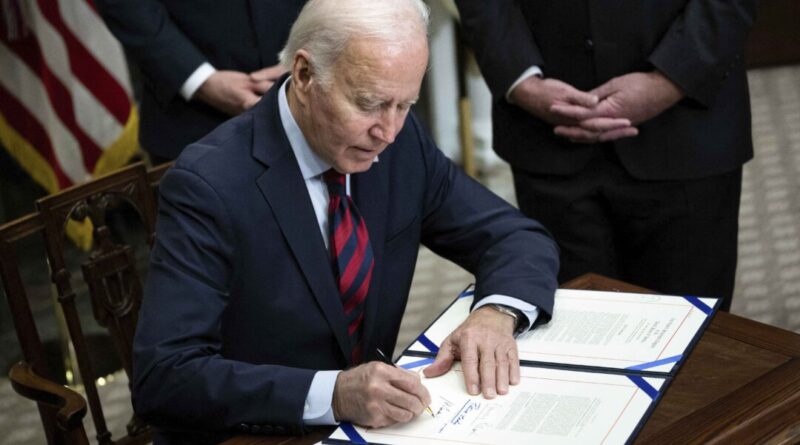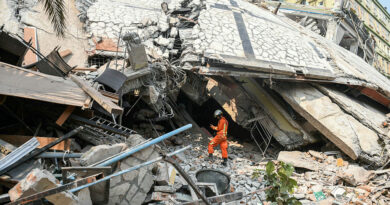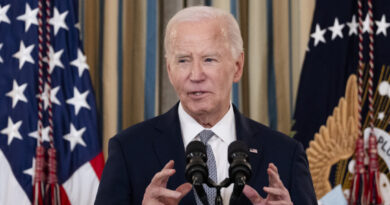Biden Delays Announcement of Two New National Monuments in California
Due to a significant windstorm that fueled several destructive wildfires in Southern California, President Joe Biden has postponed his scheduled January 7 event in Riverside County, where he intended to unveil the creation of two new national monuments. The announcement will now take place next week.
The establishment of these two monuments aligns with the administration’s extensive goal of conserving at least 30 percent of U.S. lands and waters by 2030 through the America the Beautiful initiative, a decade-long plan to restore and protect America’s natural resources.
The new monuments are designed to ensure access to clean water, respect the cultural heritage of tribal nations and indigenous communities, and enhance public access to nature. According to the White House, 674 million acres of U.S. lands and waters have been preserved under Biden’s leadership since he took office.
The creation of the Chuckwalla National Monument, located south of Joshua Tree National Park, will also prohibit drilling, mining, and other industrial activities in the region.
Chuckwalla National Monument
The designation of the Chuckwalla National Monument means Biden has established “the largest corridor of protected lands in the continental United States, totaling nearly 18 million acres that stretch across approximately 600 miles,” as per the White House.
The Chuckwalla National Monument, which lies immediately south of Joshua Tree National Park, safeguards over 624,000 acres of Southern California land.
This area is home to 50 endangered species of flora and fauna, such as the desert bighorn sheep, Agassiz’s desert tortoise, and the Chuckwalla lizard. Additionally, it represents the ancestral territories of the Cahuilla, Chemehuevi, Mojave, Quechan, and Serrano Nations, among other indigenous groups.
Within the new monument are sacred sites, ancient pathways, historical properties, cultural zones, religious locations, rock art, geoglyphs, and pictographs. The White House also emphasized the opportunity this creates for securing clean energy initiatives.
“The renewable energy sector has been an essential ally in our efforts to build consensus and collaboration regarding the proposed monument,” stated Acting Deputy Secretary Laura Daniel-Davis. “To address the climate crisis with the necessary urgency, we must keep seeking ways to protect sacred lands, plants, and wildlife while advancing a clean energy agenda.”
Sáttítla Highlands National Monument
The Sáttítla Highlands National Monument is situated in Northern California’s mountainous region. It spans over 224,000 acres, which includes portions of the Modoc, Shasta-Trinity, and Klamath National Forests.
The Sáttítla Highlands encompass the ancestral lands of the Pit River Tribe and the Modoc Peoples, along with other tribes and indigenous communities such as the Karuk, Klamath, Shasta, Siletz, Wintu, and Yana.
Located within the monument is the Medicine Lake Volcano, a dormant volcano located approximately 50 miles northeast of Mt. Shasta. The geological features of the area are integral to the spiritual beliefs and cultural practices of its indigenous peoples, according to the White House.
The land designated as the new monument is also a habitat for numerous species, including the northern spotted owl, the Cascades frog, and the long-toed salamander.
Opposition
Some opposition has arisen regarding Biden’s designation of such extensive land areas.
Ron Kliewer, president of Public Lands for the People, expressed concerns that the protection of vast stretches of land may restrict access to rare earth elements and other vital minerals that could be utilized in technology, leading to reliance on international sources. He also indicated that it could displace people into other desert areas.
“Restricting such extensive desert areas increases pressure on the remaining lands,” Kliewer noted in a statement to The Epoch Times. “More individuals utilizing less land could lead to a demand to close the limited space available due to potential overuse by an increasing number of people.”
He also criticized the approach taken by the executive branch in designating these monuments. Biden used the Antiquities Act of 1906 to establish the Chuckwalla National Monument, which legally protects cultural and natural resources on federal lands that hold historical or scientific significance.
“The Antiquities Act was never meant for designating hundreds of thousands of acres at once,” Kliewer argued. “It was specifically intended to protect smaller historical sites.”
President Theodore Roosevelt was the first to invoke the Antiquities Act in 1906. Since then, eighteen presidents from both major parties have utilized the Act, including recent presidents such as Donald Trump, Barack Obama, George W. Bush, and Bill Clinton.
City News Service contributed to this report.




